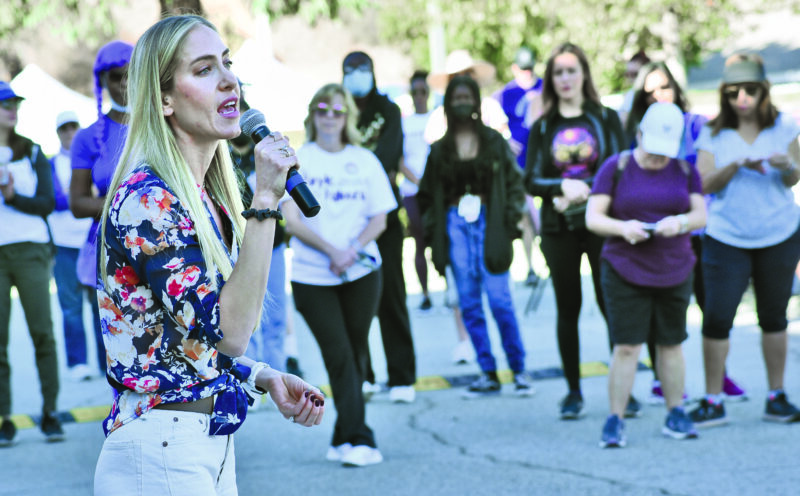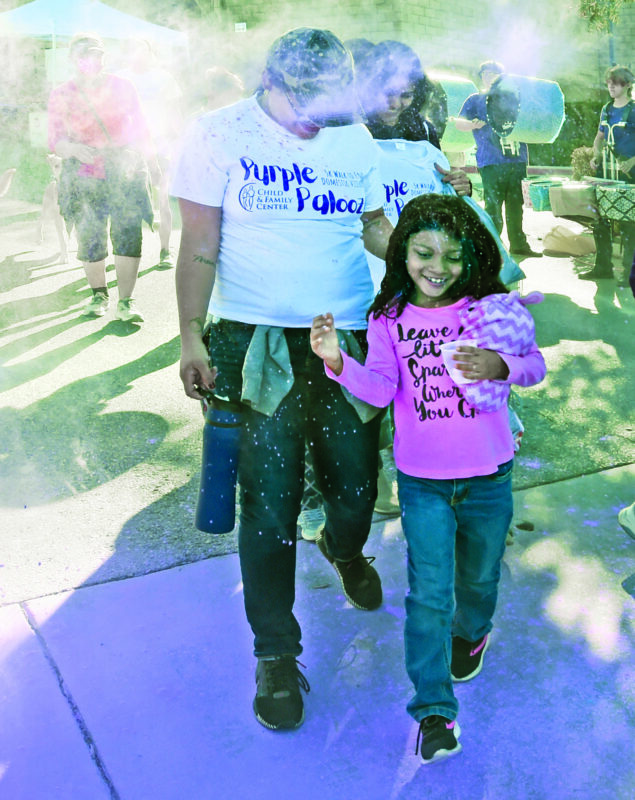Amy Green was a young woman when she fell into a cycle of abuse that began with a relationship with the wrong man and led her to an addiction to heroin.
“I felt like it was my job to love this person because who else was going to love this person, right?” Green asked rhetorically. “I gave up so much of who I am to support someone who was never going to support me.”
Green described herself as a three-sport “Division I” athlete and a straight-A student at the time, but no one would have ever known what was happening in her life.
“I didn’t have any physical signs of abuse, but his emotional and mental abuse was leading me to physically abuse myself,” Green said. “It wasn’t until 2016 that I got help. My family had an intervention on me and had to rip me out of the situation that I was in, because I still couldn’t leave. I wanted to leave so bad, but I didn’t how to ask for help.”

Green shared her story as part of the Child & Family Center’s Purple Palooza 5k Walk to End Domestic Violence on Saturday. The event is a 5k color walk that raises funds and increases awareness of the center’s domestic violence program.
Cheryl Jones, vice president of community outreach and marketing, said about 250 attendees participated in the walk.
Last year, the center hosted a virtual walk due to COVID-19 and raised $14,000. She noted the center raised approximately $45,000, thanks to the donations and sponsors in the community.

The Child & Family Center merged with the SCV Domestic Violence Center three years ago, according to Dr. Joan Aschoff, CEO and psychologist at the center. The Child & Family Center serves about 900 children and families across the Santa Clarita Valley, Antelope Valley and the San Fernando Valley.
“We provide mental health services, domestic violence services and substance abuse services,” Aschoff said. “Most of our services are provided for low-income families, uninsured and underinsured. We depend on our volunteers, fundraising and government assistance to close those gaps and provide these services.”

Domestic violence beings in cycles. It begins with families observing that form of interaction, and they go on to repeat that cycle, Aschoff said. The Child & Family Center offers prevention and education services on healthy relationships.
Beyond their services, the center also connects their clients with resources for housing, food and financial aid in the SCV.
Families and individuals unable to meet their basic needs tend to deal with higher levels of depression and anxiety. These conditions can lead to more incidents of abuse or domestic violence, Aschoff said.
“We depend on our community partners to meet those needs,” Aschoff said. “We coordinate closely with Bridge to Home, Santa Clarita Grocery and food pantries. Then we’re able to provide the behavioral health services they need.”
Green also noted the importance of community as means to break out of the cycle of abuse.
The focus is not on the details when she shares her story, she said. But on what she did to overcome and those who helped her escape the cycle of abuse.
“I know there are people here who still don’t know how to ask for help because it’s shameful, right, the things that we go through,” Green said. “We’re all resources for each other. The opposite of addiction is not sobriety but connection. As long as we stay connected and work, we are allowing ourselves to ask for help when we need it.”









